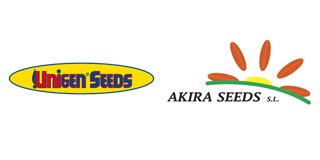
UNIGEN SEEDS SPAIN
UV-C, a good sanitizer method to maintain the quality of arugula
The arugula (Eruca vesicaria Mill.) is an annual plant usually consumed as young leaf, with a strong and spicy characteristic flavour. Due to its nutritional characteristics, (vitamins, folic acid, carotenoids, flavonoids and glucosinolates contents) is increasingly appreciated by consumers making it interesting for the fresh-cut elaboration. In order to obtain a product that preserves their organoleptic and nutritional quality, being besides safe for consumers, the synergic effect of the UV-C treatment irradiation (0.34; 5.16; 10.15; 15.14 and 20.13 kJ m-2)
01 June, 2021
The arugula or rocket (Eruca vesicaria Mill.) is an annual plant usually consumed as young leaf, with a strong and spicy characteristic flavour. Due to its nutritional characteristics, (vitamins, folic acid, carotenoids, flavonoids and glucosinolates contents) is increasingly appreciated by consumers making it interesting for the fresh-cut elaboration. In order to obtain a product that preserves their organoleptic and nutritional quality, being besides safe for consumers, the synergic effect of the UV-C treatment irradiation (0.34; 5.16; 10.15; 15.14 and 20.13 kJ m-2) combined with the subsequent high O2 (> 85%) atmosphere packaging were evaluated. As control NaOCl solution (100 mg L-1) washed was used. After 1, 4, 7 and 10 days of storage at 5?C, respiration rate; atmosphere composition; microbiological growth (total aerobic mesophiles, psycrotrophs and Enterobactericeae); antioxidant activity (FRAP assay); total polyphenols (using the method reported by Singleton and Rossi) were determined. All treatments showed a respiration rate reduction with final values between 11.07-14.55 mg CO2 kg-1h-1. O2 levels inside the bags were maintained around 70%. Although the highest microbial load of the raw material, higher UV-C radiation (15.14 and 20.13 kJ m-2) enabled 1 and 1.5 log units initial reduction on mesophiles, psycrotrophs and Enterobactericeae counts. However, after 10 days of storage, this tendency was only maintained in Enterobactericeae where the UV-C treated leaves reached values of about 11 while control reached 12 cfu g-1. Mesophiles and pyscrotrophs counts were among 12 cfu g-1. Total antioxidant capacity and polyphenol contents were increased in all of the UV-C treatment, showing after 10 days values between 870-1,300 ?g Eq. Trolox g-1 and between 2,200-3,300 ?g Eq. p-cumaric acid g-1 respectively. The UV-C as a sanitizer method combined with superatmospheric O2 conditions maintains the overall quality of fresh-cut arugula, thus it can be considered a feasible alternative to industrial scale enforcement. [Acknowledgements: The authors are grateful to CONICYT-CHILE (FONDECYT Project No. 1120274 and Postdoctorado N? 3130363) for financial support]. ? Sources Effect of the UV-C radiation combined with non conventional atmosphere packaging on fresh-cut arugula (Eruca sativa Mill.) qualityA.C. Silveira1,2, A. Baeza1, V. Escalona1,31Centro de Estudio Postcosecha (CEPOC), Facultad de Ciencias Agron?micas, Universidad de Chile, Santa Rosa 11315, La Pintana, P.O. Box 1004, Santiago, Chile2Departamento de Producci?n de Frutas y Hortalizas, Facultad de Agronom?a, Universidad de la Rep?blica, Avenida Garz?n 780, CP 12300, Montevideo, Uruguay3Departamento de Producci?n Agr?cola, Facultad de Ciencias Agron?micas, Universidad de Chile, Santa Rosa 11315, La Pintana, Santiago, Chile V Postharvest Unlimited, ISHS International Conference, 10-13 June 2014, Cyprus Picture by cocinarycompartir.wordpress.com showing one of the many many dishes in which rocket is useful








